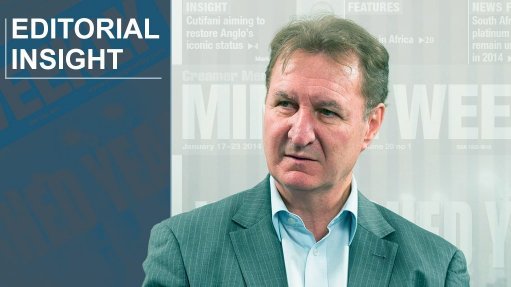
Whenever I interviewed platinum-mining executives in the late seventies and early eighties, they would invariably discuss marketing, marketing and more marketing, which platinum needs, because it is never consumed and comes back in recycled form.
I would go to the platinum fortress of the time, the old Johannesburg Consolidated Investments (JCI), and be told how important it was for platinum to be used as a catalyst in car exhaust systems so that the people of the big cities of the world could breathe easily without having to resort to gas masks.
In the background would be strong ongoing investment in the marketing of platinum jewellery, with jewellery manufacturers being primed to be at the ready to snap up the platinum metal every time its price fell significantly.
Even the big shock of Ford pioneering the switch to using palladium in autocats failed to faze the then Anglo Platinum head because of platinum’s well-marketed and growing use in the autocats of diesel vehicles.
All the while, the Anglo American group, in particular, continued to spend heavily on marketing and would speak glowingly and convincingly of the upcoming global adoption of platinum- catalysed fuel cells as the ultimate in air cleanliness.
That opportunity is now at hand as hydrogen infrastructure is put in place and South Africa, in particular, should go all out to build hydrogen infrastructure and use platinum-catalysed fuel cells to the full, linked to clean sun- and wind-generated hydrogen.
Mining Weekly is in full agreement with Mining Phakisa coordinator Edwin Ritchken, who writes in the book The Future of Mining in South Africa: Sunset or Sunrise? (published by the Mapungubwe Institute for Strategic Reflection): “The market for platinum group metals (PGMs) needs to be continuously developed as there is no ‘natural’ global demand for the metals – demand is derived through a continuous process of PGM-based technology development and commercialisation.”
His comments arise at a time when the PGMs-hosting western limb of the Bushveld Complex is at a crossroads, brought about by significantly diminished demand for platinum and a dramatic fall in its price.
Current challenges facing the sector call for collaboration at the highest level to stave off the potential long-term damage to the economy of the North West province that the contraction of deep PGMs mining would cause.
In Chapter 3, titled ‘A Vision for South Africa’s PGMs, the Gold of the 21st Century’, Ritchken emphasises the need for a commodity-specific vision for each metal within the PGMs cluster of six metals – platinum, palladium, rhodium, osmium, ruthenium and iridium, which occur together in nature alongside nickel and copper.
In addition, he adds, South Africa requires a nationally driven effort to generate sustainable demand for the metals so as to secure the sustainability of the industry. This, in turn, will require an enabling policy and regulatory environment.